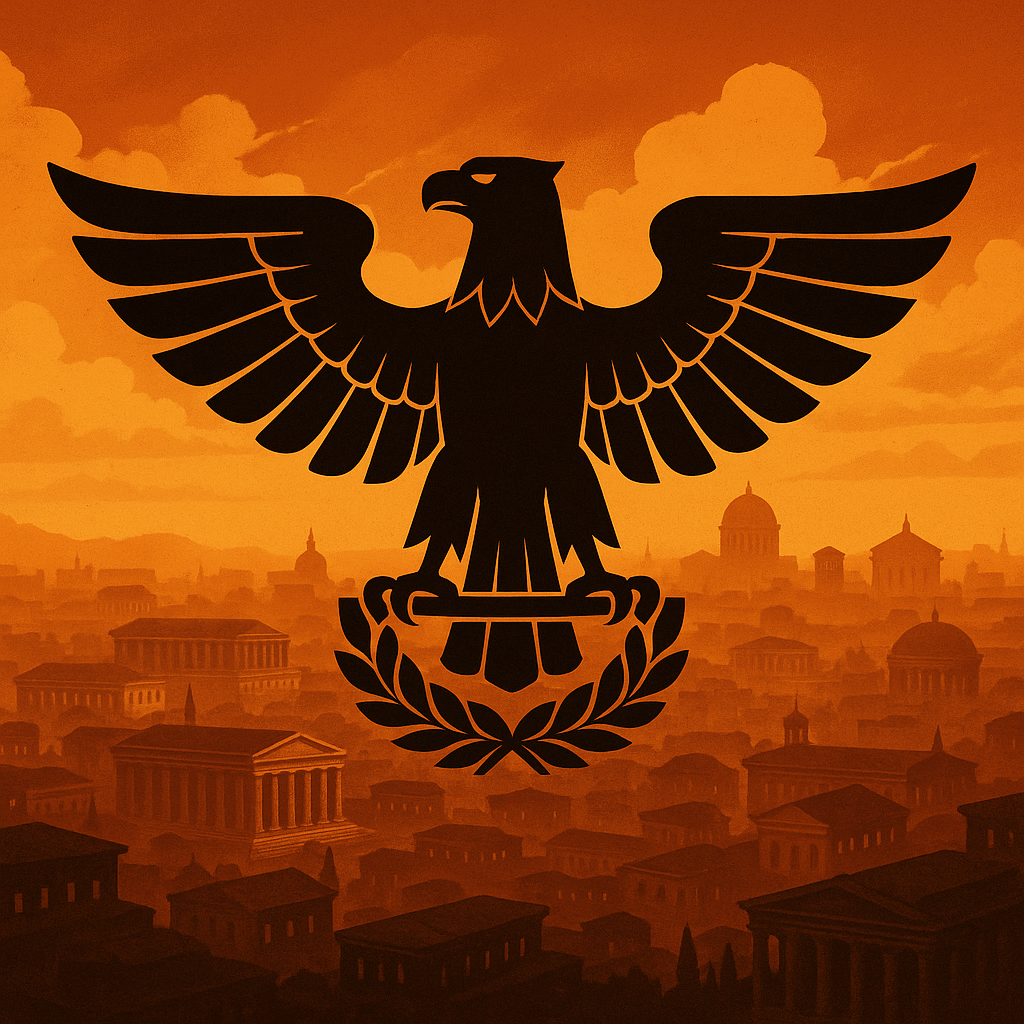
In a distant realm—not bound by stars but by the laws of order, conquest, and legacy—there rose an empire unlike any other. It began as most empires do: with a symbol.
A bird.
Not just any bird, but a raptor forged from myth and mandate. Wings outstretched, talons clenched, gaze eternal. It watched over legions of iron-disciplined soldiers and scroll-bearing governors. Wherever it flew, civilization followed—roads unfurled, aqueducts poured life into deserts, and laws bound the wilds into manageable provinces.
But conquest was never the end goal. Control was. The Empire learned early that to rule forever, one must not appear to rule at all.
So when its first skin grew worn and its borders frayed, it shed its scales and stepped into shadow. The citizens toasted its memory while unknowingly bowing to its continuation.
In the centuries that followed, three great cities—glittering and unaligned on the surface—became the spine of its new form. One controlled war, one controlled wealth, one controlled spirit. Each bore the mark of the eagle, though its wings were stylized now, wrapped in gold or draped in robes of divinity.
There was a prophet once—born in obscurity, died in spectacle—who rattled the eagle’s cage. He spoke of justice, of the meek, of a kingdom not built on coin or sword. And for that, the Empire made an example of him.
But ideas are harder to kill than men. So the Empire did what it always does: it adopted the threat. Absorbed it. Painted it in its colors. Made the rebel into a god, then chained his memory to marble halls and gilded ceilings. The eagle perched on steeples now, talons dug into new ground.
Time marched. The Empire grew invisible. Its governors no longer wore laurels but suits. Its temples pumped oil instead of prayer. The people, now citizens of the First Circle—those favored lands of light and access—believed they had long since transcended empires.
But the eagle kept flying.
In one particularly dark chapter—called the Great Division by later chroniclers—the eagle fought itself. Claw against claw. One faction sought brutal clarity. Uniformed order. Grand parades and mythic purity. The other preferred subterfuge. Control by consumption. Entertainment. Algorithms. Both sides, though bitterly opposed, saluted the same bird.
Cities burned. Lines were redrawn. And when the smoke cleared, the eagle remained untouched, higher than before, more decentralized, more divine.
Buried knowledge—the kind that could remind men of older truths—was quietly spirited away. Skeletons too large, maps too accurate, languages too complex… gone. Archived in vaults of denial. Citizens were taught that history was linear. That nothing before them had ever been greater. That they were the pinnacle, always.
They were taught to fear the dark, but never the bird flying overhead.
And now? Now the eagle doesn’t just guard the gates. It’s printed on passports. Glowing behind news anchors. Embossed on coins and stitched into uniforms. It speaks in laws, in code, in content moderation. You don’t see the empire because you live inside it. You’re its brick and its blood.
The Empire of the Eagle did not fall.
It ascended.
So large now, the peasants mistake it for the sky.
Rome never ended.
You just stopped calling it that.
And now you know… the rest of the story.


